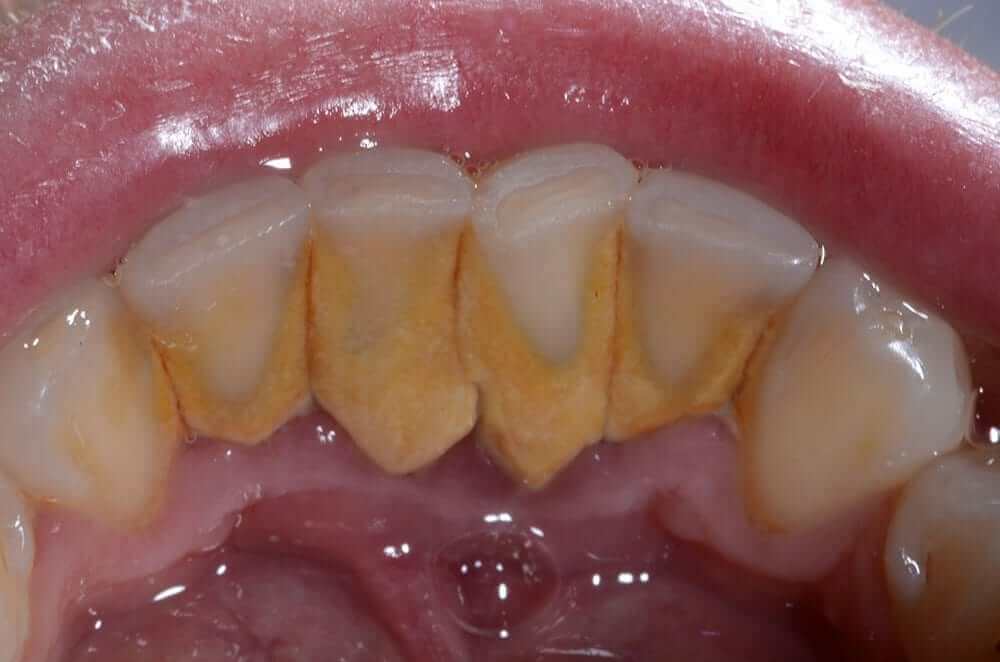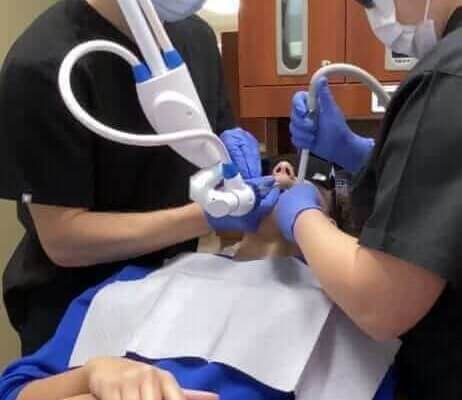Improve Your Smile with Receding Gum Treatment
Gum recession is an epidemic in the United States. In fact, more than 50 percent of American adults are living with this condition—and most don’t even know it.
Gum recession is an outcome of periodontal disease, or gum disease, which also can cause severe discomfort and tooth decay. These problems can escalate and, ultimately, require receding gum treatment.
For 20 years, Lakefront Family Dentistry’s cosmetic dentist Dr. Hauser, DDS, has been transforming smiles for families throughout Riverside County. Schedule a visit to restore your smile and oral health. Contact Carla or Jodi at (951) 244-9495 or Request an Appointment Online Today!
This Can Happen to You, too, Sooner Than You Think without Proper Oral Care
Periodontal Disease Treatment and Deep Teeth Cleaning Required for Hard Plaque Build Up
Gingivitis and Periodontal Disease
Gingivitis, the first stage of gum disease, begins with bacterial growth in the mouth. If not properly treated, gingivitis can lead to tooth loss as it destroys the tooth’s surrounding tissue.
Gingivitis also causes gum inflammation. If left untreated, it progresses into a more serious form of periodontitis. This causes the inner layer of gums and bone to pull away from the teeth, creating a pocket. These small spaces then collect debris and can become infected.
Poisons and toxins start to break down the connective tissue and bone that hold the teeth in place. As the disease develops, the pockets deepen and more bone is destroyed. When this happens, the teeth are no longer anchored to the gums, resulting in tooth loss.
Fortunately, even in the later stages of periodontitis, which are characterized by bone and tissue damage, bleeding and irritation, all symptoms can be reversed by a family dentist.
The Causes of Gum Disease
Although plaque is the primary cause of gum disease, other factors can contribute to its progression, including:
- Hormonal Changes: Hormonal changes that take place during puberty, menopause, pregnancy and monthly menstruation can cause the gums to become more sensitive, which makes them vulnerable to gingivitis.
- Illness: Some illnesses, such as cancer and HIV, can interfere with the immune system. This makes your gums more susceptible to infection. Diabetes also increases the chance of infection, gum disease and cavities because it affects the body’s ability to use blood sugar.
- Medications: Certain medications can affect your oral health. Some inhibit the flow of saliva, which protects the gums and teeth. Drugs like Dilantin and Adalat can cause abnormal growth of gum tissue.
- Unhealthy Habits: Habits like smoking and consuming a high-sugar diet make it difficult for gum tissue to repair itself.
- Poor Oral Hygiene: Forgetting to brush or floss your teeth can result in gingivitis. Never go to bed without brushing and flossing, since your saliva production slows down dramatically. This saliva is what helps to kill bacteria in your mouth. Combine a lack of saliva with leftover food, and you have a breeding ground for gum disease! It only takes two minutes to better oral health and less trips to the dentist, which saves you money and time.
- Family History: If someone else in your family has had periodontal disease, there is a higher probability that you will contract the disease.
Symptoms of Gum Disease
Gum disease can progress without any painful symptoms. So, it’s always important to schedule regular cleanings and to pay attention to any subtle signs, such as:
- Bleeding gums during and after tooth brushing
- Red, swollen or tender gums
- Persistent bad breath or a continuous bad taste in the mouth
- Receding gums
- Loose teeth
- Shifting teeth
- Changes in the way your teeth fit together when biting
Some people may never notice any symptoms. Often, only a dentist can recognize gum disease, which is why your semi-annual checkup and professional teeth cleanings are so critical to your overall health.
Gum Disease Treatment
There are several treatments for gum disease. Three factors determine the best procedure for an individual patient:
- The stage of the condition
- How the patient has responded to previous treatments
- The patient’s overall health
Treatments range from nonsurgical therapies that regulate bacterial growth to surgical treatments that restore supportive tissues.
Periodontal disease can be reversed or prevented with receding gum treatment. This means receiving a deep cleaning to the affected area. During this cleaning, plaque and tartar that has built up over time is carefully removed. The exposed root area is smoothed to make it difficult for bacteria to attach.
Sometimes, dentists will prescribe antibiotics to get rid of any remaining bacteria, depending upon the condition of your oral health.
Why Doctor Hauser?
Dr. Hauser thoroughly examines each of his patients to uncover their specific needs. He is happy to offer his patients guidance and advice on improving their overall dental health. He also is one of the few dentists with a team of three registered dental hygienists.
To discuss gum disease treatments and schedule an appointment with Dr. Derek Hauser, DDS, please contact Carla or Jodi at (951) 244-9495 or Request an Appointment Online Today! We look forward to having you become part of our family at Lakefront Family Dentistry.







